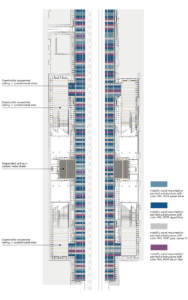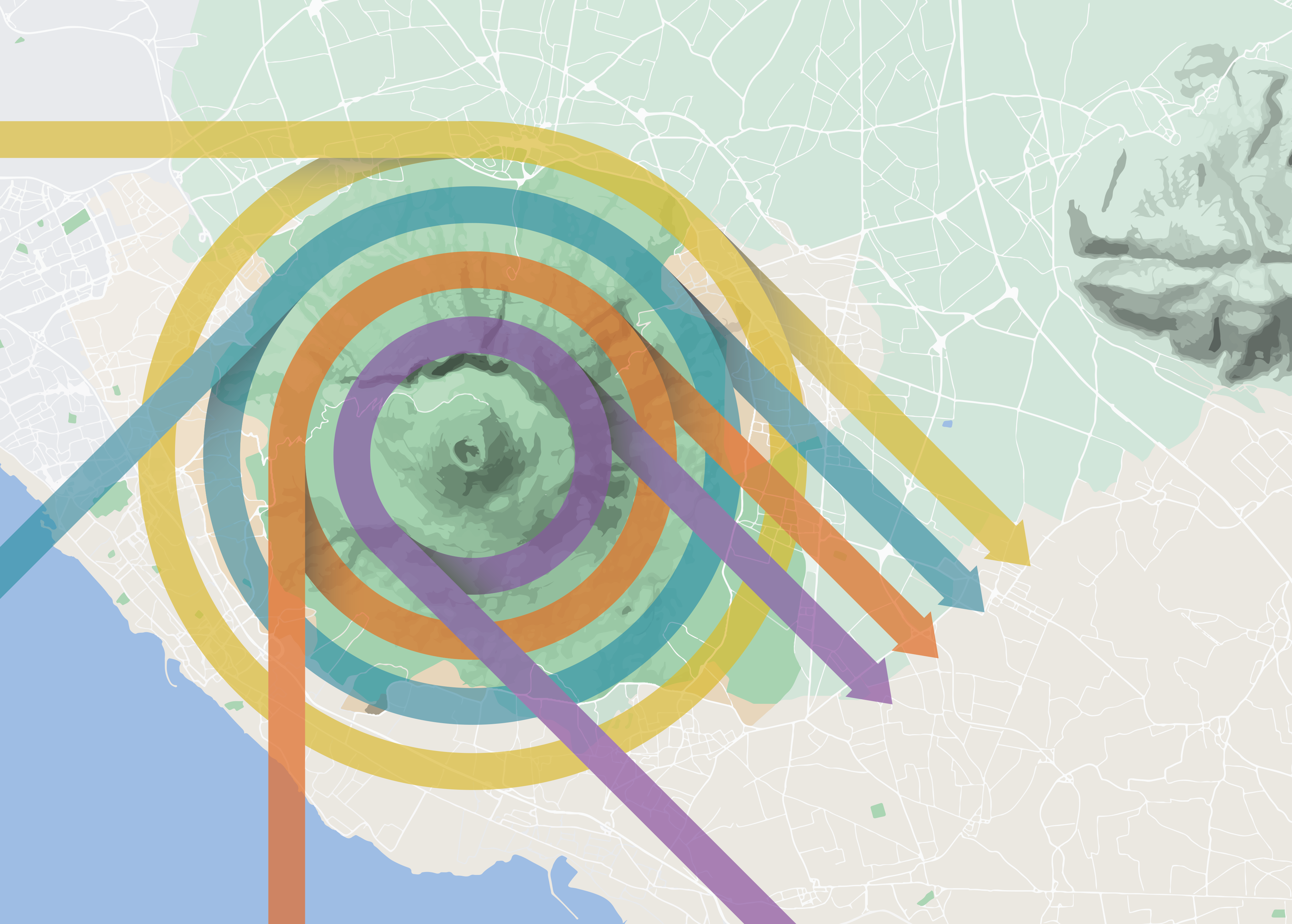Impermeabilisation of the EAV tunnel along the Circumvesuviana railway
Technological innovation and engineering culture to restore existing works.
The EAV tunnel on the Naples-Nola-Baiano section of the Circumvesuviana railway was constructed in the 1970s and 1980s and is affected by water infiltration caused by a rise in the water table, ongoing for a number of years.
There have been various attempts to stop the infiltrations over the years but the problem has never been completely solved because the railway is at a lower level than the current water table. NET Engineering was assigned to the definitive planning of the waterproofing operations and the restoration of the tunnel for an overall length of about 3 km. The aim of the work is to dry out the railway track, thus rationalising use of the dewatering system currently operating.
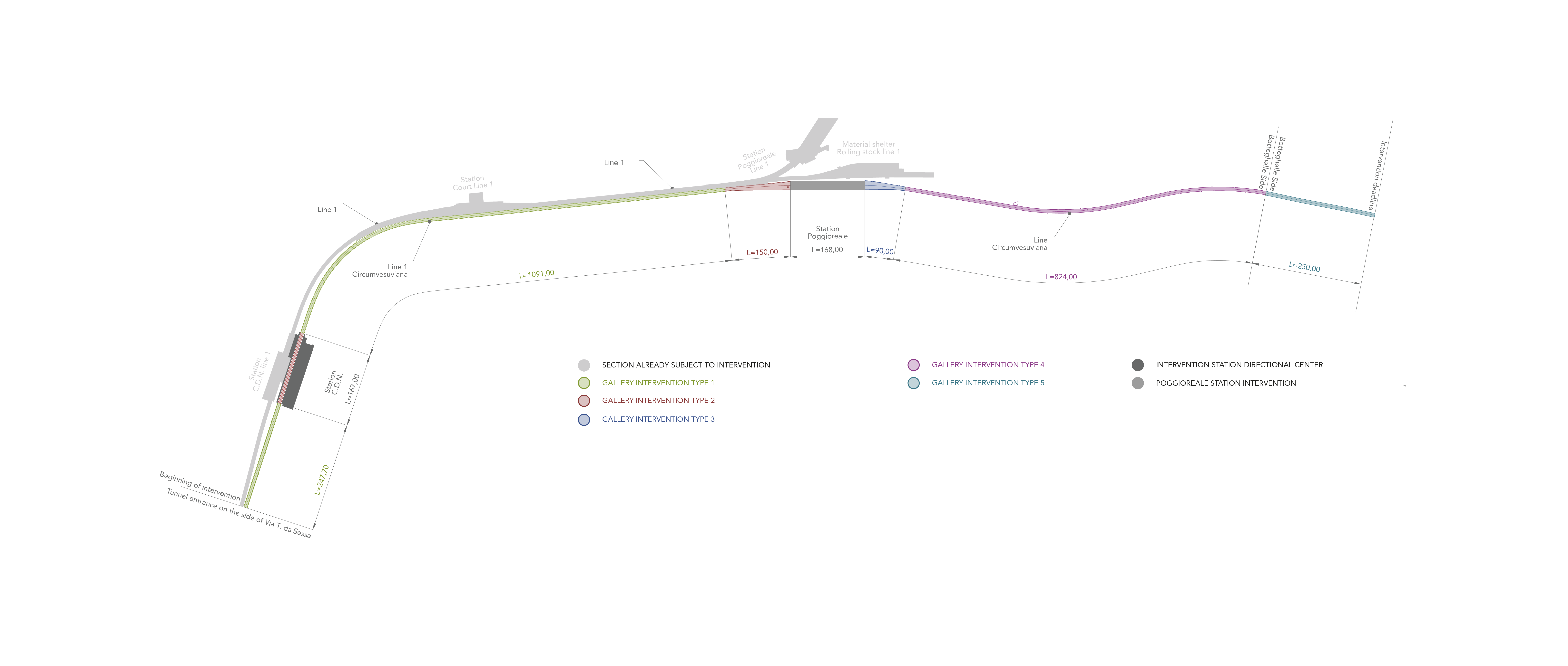
Restoring a metropolitan tunnel
Starting from the information collected using the laser scanner on the internal surfaces, which gave precise, measurable detection of the widespread damage/deterioration of all the exposed surfaces, a detailed operation plan was drafted.
Firstly, the project sets out the restoration of the existing structures. In detail, the localised and widespread deterioration in correspondence to the bulkheads and upper slab will be renovated to preserve the static function of the ceiling and reduce the degree of permeability with specific treatments. After this, a U-section, reinforced concrete structure will be created consisting of the base floor and two side walls prior to demolition of the existing side platforms, until the extrados height of the base slab is reached. The new structure will be waterproofed adopting two different solutions:
- by inserting a PVC membrane between the existing structures, and new casts, taken to near the outer slab;
- by creating casts using a cementitious waterproofing system with appropriate additives to the cement and the creation of joints and, if necessary, injections at predefined points.
Five types of intervention have been indicated along the line tunnel which differentiate according to the geometry of the new structures. There are also 2 further types for the Centro Direzionale and Poggioreale stations which are found in the section under examination.
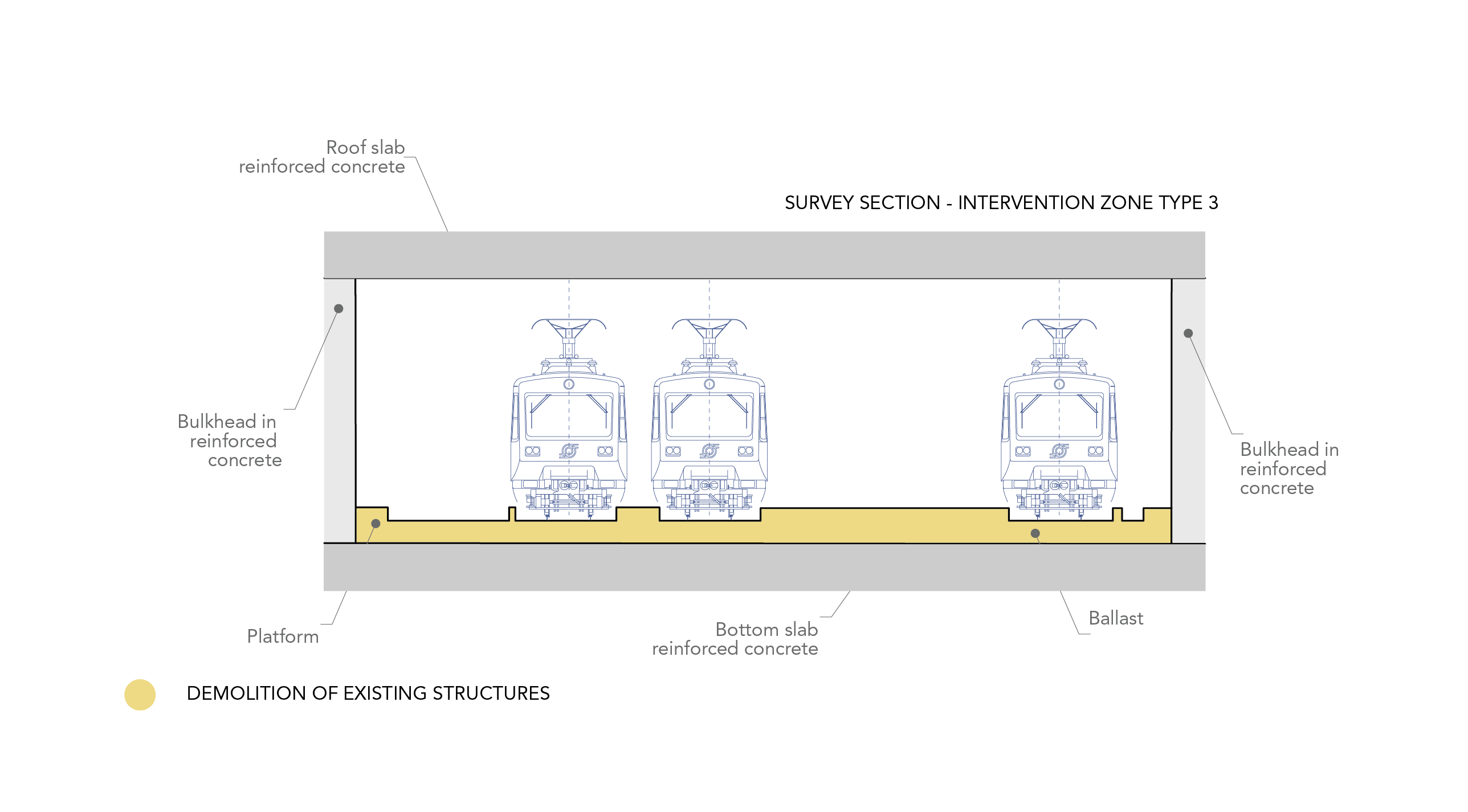
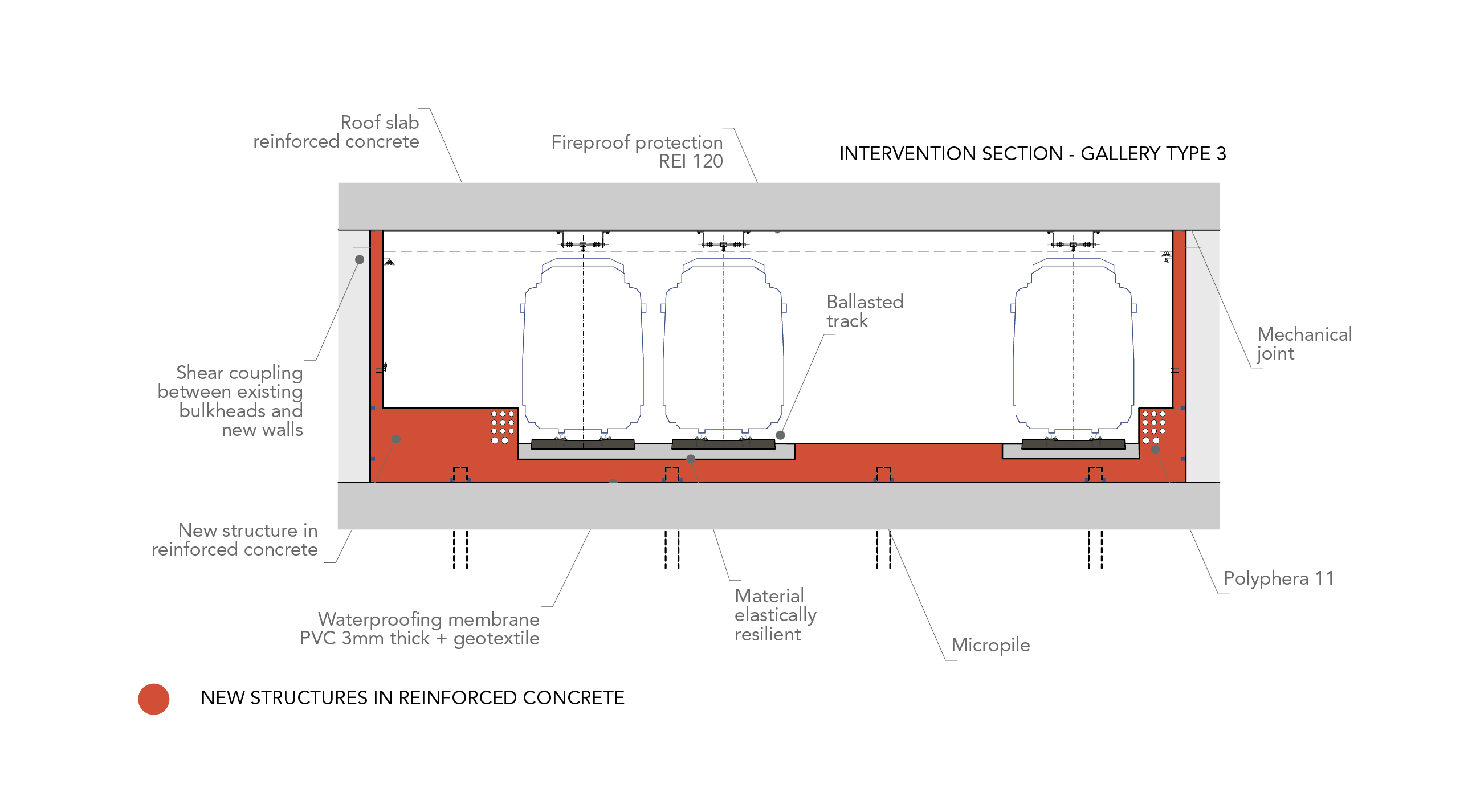
Updating station works: an architectural project
Following the waterproofing of the EAV tunnel, NET Engineering curated the Final Design of the updating of the station works and the new finish for the Centro Direzionale stop. As this is a railway redevelopment, the main design theme was to indicate and analyse all the essential elements for station operation so that their size and position could be optimised, keeping the current positions of lifts, moving staircases and escalators to the mezzanine floor. The construction of the new bottom slab will mean the track level will be raised along the whole line. As a result, the Centro Direzionale stop will require an increase of 55 cm in the track level for both existing platforms to allow the introduction of the waterproofing structure. As a consequence, all the lifting mechanisms to the mezzanine floor and the relative parapets will be updated. The flooring, ceilings and platform furniture will all be new, including latest generation paths for the visually impaired. Special attention was paid to the design of the walls. The choices on architecture and the finish came from the desire to give the stop an identity common to that of the station. The stop on the Circumvesuviana line is part of the same context as the Line 1 station, designed by Miralles Tagliabue EMBT studio, and under construction. As a result, NET Engineering chose to use the same architectural language and the same materials, planning a shaped curved coating for all the walls to characterise the station, with seats housed in the niches.
Approaching an existing work means understanding its peculiarities, catching structural features without being able to read the project, interpreting its deep problems starting from the often incomplete and practically incompletable data.
So what should be done? How can an infrastructure be made safe? How can a tunnel be recuperated and restored? In this context, it’s essential, especially for tunnelling, that there’s a significant design effort but, above all, great professional maturity, knowledge of construction methods and thorough engineering culture that can understand the ‘symptoms’ that show.
